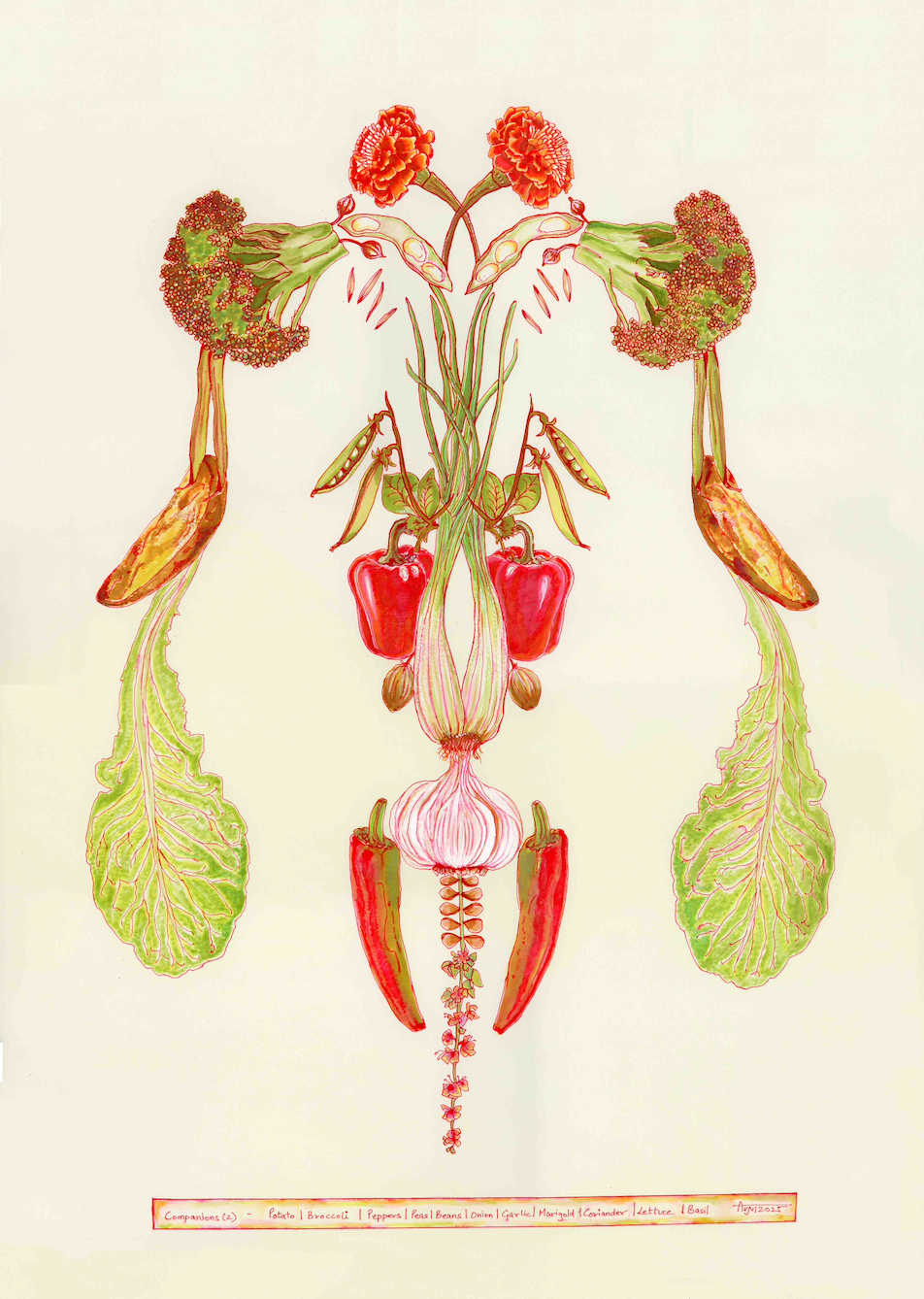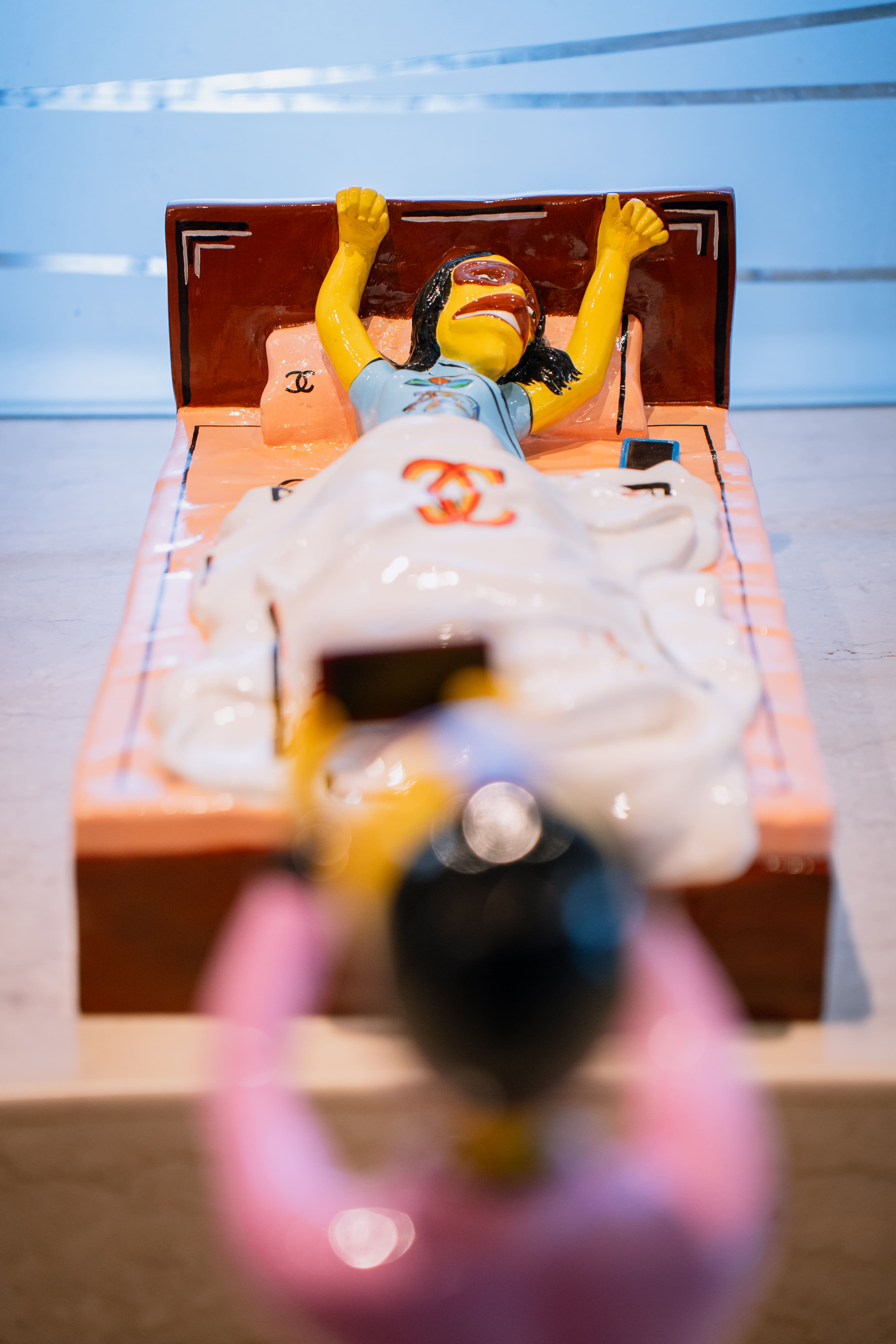2025

Gateways & Pathways - Tao at 25
Curated by Ranjit Hoskote
At the core of the exhibition proposed to
celebrate the Tao Art Gallery’s 25th anniversary is the hospitable ethos it has created and sustained: an ethos that has been open and responsive to artistic creativity across the conventional boundaries of style, genre, medium and generation. Tao has acted as a platform to present the work both of established figures as well as emergent practices in the art world – which is why this celebratory exhibition is titled Gateways and Pathways.
The Tao Art Gallery has provided its viewers with gateways into the canonical history of the art world as well as with pathways forward into evolving futures. And these gateways and pathways have not been mutually exclusive: in the ambit of Tao, established figures have recreated themselves startlingly in experimental mode, while emergent practices have been in vibrant dialogue with their inheritance. Since the journeys of more than sixty artists will comprise this exhibition, it will act as a festival of varied artistic itineraries, an assembly of diverse voices. Among these artists are those who have been closely associated with the gallery, as well as those who have been friends of the gallery and shown there occasionally, either in solo presentations or group shows.
All we ask of the participating artists is that they should be intensely themselves. And as the works come in, we will compose them across the exhibition space – the historic Jehangir Art Gallery, designed by the architect Durga Shankar Bajpai and celebrating the 73rd year of its opening this year – in terms of remarkable affinities and dramatic paradoxes.
Integral to the narrative of this exhibition, also, is the trajectory of the gallery as it has mapped the period between the late 1990s and the present – a phase in India’s art history that has borne witness to a shift from the dominance of a few major painters and sculptors to the diffusion of a wide range of practitioners, many of whom straddle the domains of art, popular culture, activism, and various subcultures, while also exploring the formal and conceptual possibilities of multiple media. In charting this trajectory, Gateways and Pathways will also propose a flow of shifting timelines, marked by the interplay of legacy and improvisation.
(Jehangir Art Gallery: Tuesday, September 23 to Monday, September 29
Tao Art Gallery: Friday, October 3 to Tuesday, November 4)
A Glimpse Into The Past
Art, Sculpture & Mementos from the Modern Indian Masters
As Tao completes 25 years we bring together this collection of work by the Modern Masters: M.F. Husain, S.H. Raza, Krishen Khanna, Akbar Padamsee, Bal Chhabda, Ram Kumar, Himmat Shah.
Some have been collected by our founder Kalpana Shah over the past few decades: from exhibitions curated by her and through her personal interactions with these artists. Some have been collated from senior collectors.
Through their nuanced observations of evolving India in the decades post independence to their ability to blend east with west in an increasing global world, their works are a beautiful capturing of the cultural context of that time. By recognising the past, we hope to be able to honour the massive role these stalwarts played in the gallery’s growth and in the growth of Indian Art as a whole.
(Saturday, July 26 to Sunday, August 31)


Isotropical Futures
Isotropical Futures explores ecological and social survival through the lens of deeply personal and politically conscious artistic practices of Asif Imran, Avni Bansal, David Malaker, Geetanjali Bayan, Harmeet Rattan, Moumita Basak, Sitikanta Samantsinghar, Satadru Sovan, and Unnikrishnan C. Borrowing from the scientific principle where unstable systems tend toward isotropy - a state of equilibrium - this exhibition challenges the illusion of “diversity” as a solution for ecological collapse, instead proposing a radical rethinking of collectivity, homogenization, and solidarity - not in erasure of difference, but in alignment with nature’s interdependence.
Drawing from eco-social theory and lived experience, the artists in this exhibition reflect how environmental degradation disproportionately affects marginalized communities - minorities, Indigenous peoples, and the economically disenfranchised - and how identity can both resist and be co-opted by extractive systems. In this attempt, Isotropical Futures reclaims homogenization not as an oppressive force, but as a potential condition for planetary survival, asking if a shared ecological subjectivity - grounded in care, mutual vulnerability, and interconnection can emerge in place of individualism and capitalistic logic.
Here, nature is not a backdrop but collaborator, ancestor, and witness. The artists bring forward practices rooted in community, lineage, and land, resisting capitalist narratives of extraction and progress. Isotropical Futures doesn’t seek utopia but it seeks alignment: where grief and growth, identity and ecology, resistance and care exist not in binaries, but in entangled, transformative proximity. This exhibition is not just a protest - it is a proposition: toward a just, shared future where survival is collective, and conservation is cultural.
Curated by Yash Vikram
(Friday, June 13 to Thursday, July 10)
INSTINCT
A Solo show by Anwar
The journey of an artist is one of truth. A surrender to a fundamental instinct, a guidance coming from a realm unknown, a knowledge of expression passed down through the ages. Anwar Khan, in his practice of about 40 years, has allowed this inherent purpose to overshadow all other material identities.
Expanding into newer mediums and techniques in a large-scale manner, such as wood, pyrography, ceramic, installations, he continues along his evolution in this new series, breaking free from a familiar rhythm and creating a new tune altogether. While the context of the work remains the same, the process has become deeper and more nuanced. His art, inspired by the primordial elements of nature and historical remnants of civilization, has now turned itself into something sacred. The shapes, the shades, the glistening of gold and silver, the vibrant threads tying it all together; one cannot help but experience a deep silence in the presence of his creations. The reverence the works call for are a result of his own mental discipline and faith. As a life-long student of his guru J. Swaminathan, he has stayed committed to the duty of an artist with the soul of a sufi.
The artist creates that which creation itself makes him. Rooted in mysticism, an ancient and esoteric wisdom, Anwar’s art is a cultural find. Like a lost relic it embodies the past, present and future, questioning what we consider to be contemporary, channelizing the instinct of centuries.
Sanjana Shah
(Tuesday, March 18 to Sunday, April 27)


Brain Rot - The Life You Live?
A Solo show by Viraj Khanna
Art is a reflection of society. The cultural context of our world seeps into everything we associate meaning with. Viraj Khanna explores the lives of his contemporaries around him, creating art that inspires a social commentary. Fundamentally satirical in nature, his art, be it textile or sculpture, is dramatic and absurdist. Through this exhibition he creates a series of exaggerated sculptural works that question the way
we spend our time and observes the lifestyle of the current generation he is a part of. Vibrantly detailed, each fibre glass sculpture is a narrative on the daily digital routine that dominates our world. Ideas of the psychological impact of technology and especially the overconsumption of low value content are explored. This is extremely relevant today as “Brain Rot” has been termed the word of the year by Oxford for 2024. He wants viewers to connect with the figures depicted and also reflect on the question "The Life You Live?" in their own individual contexts.
Sanjana Shah
(Thursday, January 9 to Saturday, February 15)
